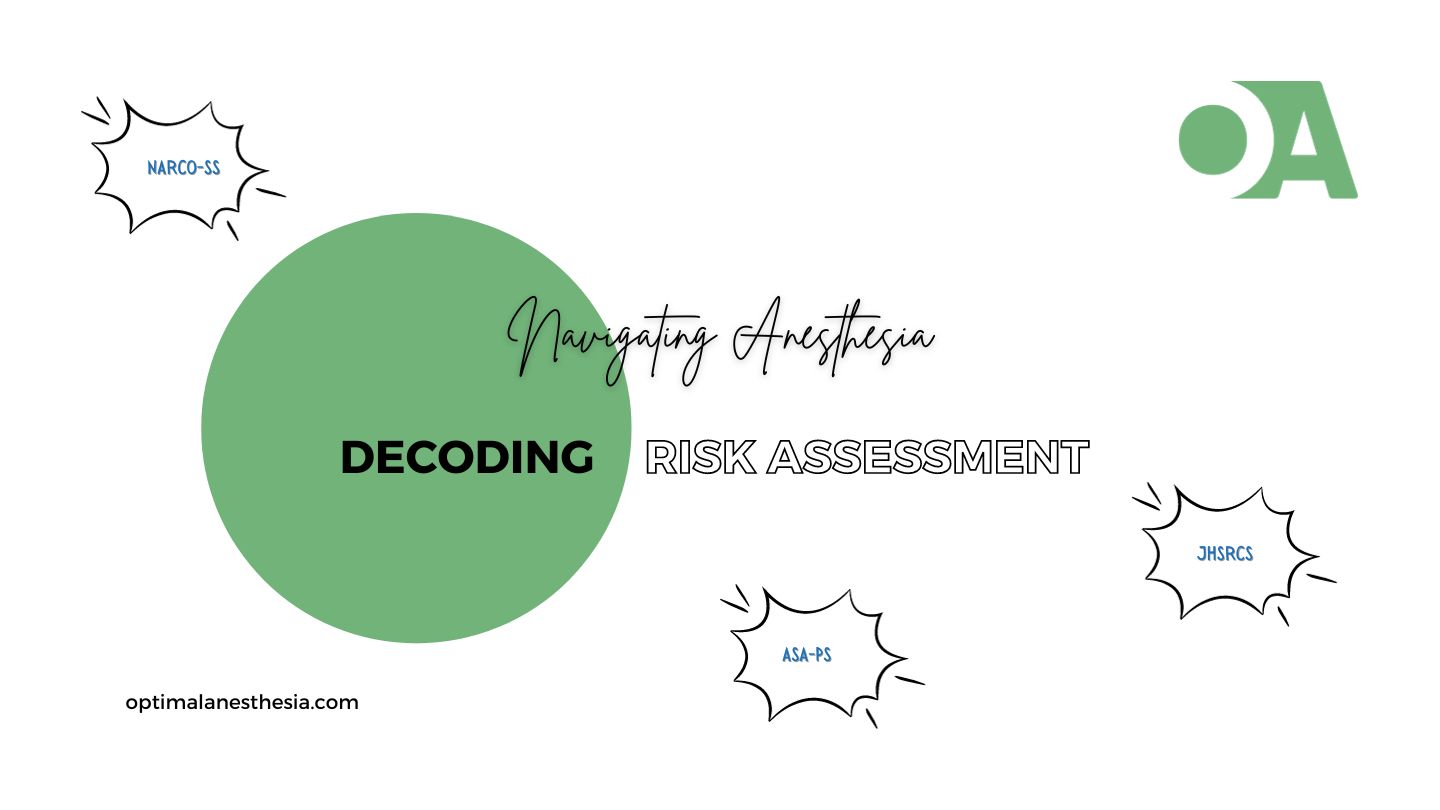Risk assessment plays a vital role in healthcare to ensure patient safety and tailor medical care to individual needs. Several risk assessment systems have been developed, each with its own scoring system, to categorize patients’ preoperative and intraoperative risks. In this article, we will explore three such systems: NARCO-SS, ASA-PS, and JHSRCS, along with their respective scoring mechanisms, histories, advantages, and disadvantages.
Certainly, I can include ASA-PS Class 6 in the content. Here’s the revised information with ASA-PS Class 6:
NARCO-SS (Neurological, Airway, Respiratory, Cardiac, and Other Surgical Severity):
| Component | Score | Description |
|---|---|---|
| Neurological (N) | 0 – 3 | 0: No neurological issues, 3: Severe impairment |
| Airway (A) | 0 – 3 | 0: Easy intubation, 3: Difficult intubation |
| Respiratory (R) | 0 – 3 | 0: Normal, 3: Severe respiratory compromise |
| Cardiac (C) | 0 – 3 | 0: Normal, 3: Severe cardiac dysfunction |
| Other Items (O) | Varies | Additional factors impacting anesthesia/surgery |
| Surgical Severity (SS) | A or B | A: Less invasive, B: More invasive |
- Overall Risk Score: Combines N, A, R, C, O, and SS scores to determine the overall risk:
- Low: Lower risk
- Moderate: Moderate risk
- High: Higher risk
- Higher: Highest risk
ASA-PS (American Society of Anesthesiologists Physical Status):
| Class | Description |
|---|---|
| Class I | No systemic disease, normal and healthy |
| Class II | Mild systemic disease, not limiting activity |
| Class III | Severe systemic disease, limits activity |
| Class IV | Incapacitating disease, constant threat to life |
| Class V | Moribund, not expected to survive 24 hours |
| Class VI | Brain-dead, organ donor |
| Class E | Added in emergencies, denotes an emergency operation |
JHSRCS (Johns Hopkins Surgery Risk Classification System):
| Class | Description |
|---|---|
| Class 1 | Noninvasive procedures, minimal risk |
| Class 2 | Limited invasiveness, mild risk |
| Class 3 | More invasive procedures, moderate risk |
| Class 4 | Highly invasive procedures, significant risk |
Understanding these scores and their corresponding grades in each system allows anesthesiologists to assess a patient’s risk profile more accurately, including the potential for organ donation. It helps in tailoring anesthesia, postoperative care, and making informed decisions regarding the level of care needed.


